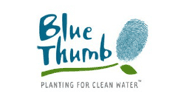 Recently, I attended a seminar on planting for clean water presented by the Dakota County Soil and Water Conservation District (Dakota County SWCD), Blue Thumb and the city of Eagan. Living in the Land of 10,000 Lakes and truly enjoying sitting on our deck looking out over a man-made pond each summer, we have a vested interest in how we plan and care for water management in our yards.
Recently, I attended a seminar on planting for clean water presented by the Dakota County Soil and Water Conservation District (Dakota County SWCD), Blue Thumb and the city of Eagan. Living in the Land of 10,000 Lakes and truly enjoying sitting on our deck looking out over a man-made pond each summer, we have a vested interest in how we plan and care for water management in our yards.
Just counting those with a surface area of an acre or more, there are about 200 natural lakes and wetlands in Eagan, and almost all are part of a stormwater drainage system. Adding in the man-made waterbodies, there are over 1,200. The stormwater management area shared with my neighbors "across the pond' is much smaller than that, but it supports quite a bit of wildlife. From the time the ice is out (nice and early this year) until it freezes over again in December, we watch for the returning ducks and mergansers to hatch new generations of their families, listen for the frogs to start their springtime serenades (a couple just started last night), and we smile when the turtles wake up and start sunning themselves on the big rock again.
You may not have a waterbody on your property like we do, but chances are, you enjoy time at a lake or on a river - Minnesota has the highest percentage of people vacationing in the state where they live. You've also got a roof over your heads, rain gutters and downspouts to divert water away from your foundation, a driveway, sidewalks and probably a little bit of lawn. Everyone of those contributes to runoff and adds to the stormwater management system. If we don't do a better job of restoring some of the native plantings that used to handle rainfall, more of our waterbodies will be turning green instead of blue.
keep reading ...
 How's everybody doing today? Anybody see any talking lions, scarecrows, tin men or flying monkeys?
How's everybody doing today? Anybody see any talking lions, scarecrows, tin men or flying monkeys?

 Recently, I attended a seminar on planting for clean water presented by the
Recently, I attended a seminar on planting for clean water presented by the  After a rather wet spring, we've had record high temperatures, coupled with an extended dry spell. To be honest, I do have an irrigation system in my yard, but it was installed before we moved in and I constantly struggle with the placement of the sprinklers, the grouping of the sprinklers and the overall installation. Be that as it may, this is about some of the misconceptions about watering and how to best care for your landscape
After a rather wet spring, we've had record high temperatures, coupled with an extended dry spell. To be honest, I do have an irrigation system in my yard, but it was installed before we moved in and I constantly struggle with the placement of the sprinklers, the grouping of the sprinklers and the overall installation. Be that as it may, this is about some of the misconceptions about watering and how to best care for your landscape I just finished cutting our lawn and having a look around the yard. This year has been tough on a lot of the landscape - trees all around the city are showing signs of stress, lawns are browning in areas, crabgrass is running rampant, among other things. As much as I like the look of a freshly cut lawn, I know the impact maintaining it has on the environment. I've had some passionate discussions about this with friends and associates also in the landscaping industry - I'd like to thank them for all they do and contribute to making our little corner of the world a better place to live in.
I just finished cutting our lawn and having a look around the yard. This year has been tough on a lot of the landscape - trees all around the city are showing signs of stress, lawns are browning in areas, crabgrass is running rampant, among other things. As much as I like the look of a freshly cut lawn, I know the impact maintaining it has on the environment. I've had some passionate discussions about this with friends and associates also in the landscaping industry - I'd like to thank them for all they do and contribute to making our little corner of the world a better place to live in.